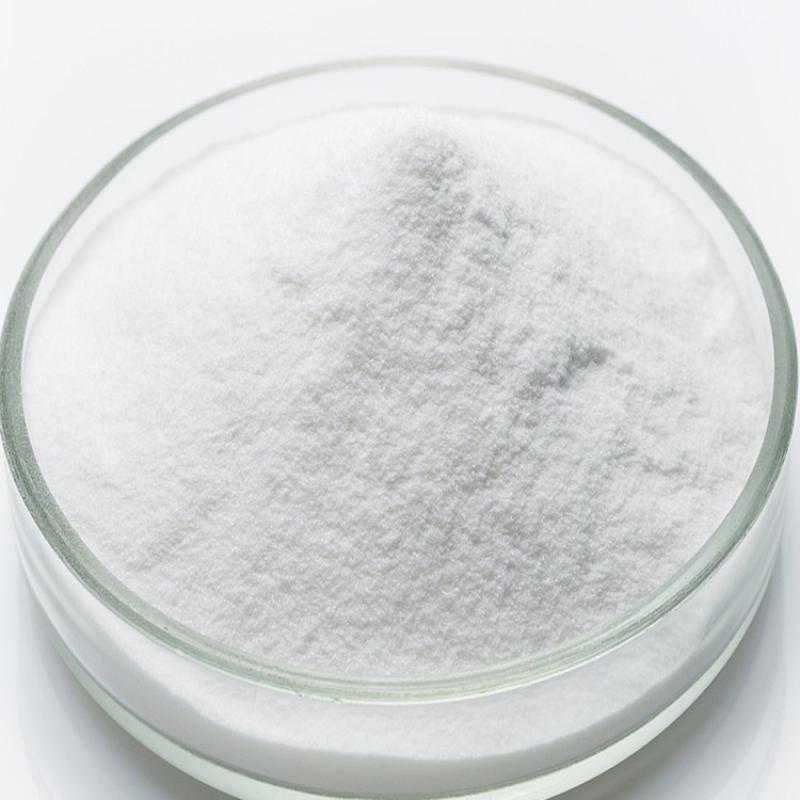Common name: DimethomorphChemical name:(E,Z)4-[3-(4-chlorophenyl)-3-(3,4-dimethoxyphenyl)acryloyl] morpholineMolecular formula: C21H22ClNO4Structural formula:Molecular weight: 387.86CAS No. : 110488-70-5Product description:It is a special fungicide of the class of oomycetes. Its function is to destroy the formation of cell wall membrane. It has an effect on all stages of the life history of oomycetes. It is especially sensitive in the formation stage of sporangia stems and oospores, at very low concentrations. Down (<0.25μg/ml) is inhibited.
Contacta ahora
Product description:It is a unique fungicide of the elegance of oomycetes. its function is to spoil the formation of cellular wall membrane. it has an effect on all tiers of the existence history of oomycetes. it's far in particular sensitive in the formation stage of sporangia stems and oospores, at very low concentrations. down (<0.25μg/ml) is inhibited. no move-resistance to phenylamides.Common name: DimethomorphChemical name:(E,Z)4-[3-(4-chlorophenyl)-3-(3,4-dimethoxyphenyl)acryloyl] morpholineMolecular formula: C21H22ClNO4Structural formula:Molecular weight: 387.86CAS No.
Contacta ahora
CAS: 110488-70-5MF: C21H22ClNO4MW: 387.86 Physical chemistry properties:The melting point of 125-149 ° CVapor pressure 1 x 10-6 Pa (25 °C)Sealed in dry,Room TemperatureWater solubility 50 mg L -1 (20-23 °C) Toxicity:The acute oral LD50 of rats was greater than 3900 mg/kg, the transcutaneous LD50 was greater than 2000 mg/kg, and the acute inhaled LC50 of rats was greater than 4.24 mg/L.It has no irritation to rabbit skin, slight irritation to eyes, and no sensitization to guinea pigs.No mutagenic, teratogenic and carcinogenic effects were observed under the test conditions.
Contacta ahora
Common name: ProchlorazChemical name: N-propyl-N-[2-(2,4,6-trichlorophenoxy)ethyl]-1H-imidazole-1-carboxamideMolecular formula: C15H16Cl3N3O2Structural formula:Molecular weight: 376.67CAS No. : 67747-09-5Product description:Prochloraz, also known as Promethazine, Promethazine, Shibaoke, and Prochloraz, is an imidazole broad-spectrum pesticide fungicide, which acts by inhibiting the biosynthesis of sterols. Although it does not have a systemic effect, it has certain conductivity properties.
Contacta ahora
Common name: TebuconazoleChemical name:1-(4-Chlorophenyl)-4,4-dimethyl-3-(1,2,4-triazole-1-yl-methyl)pentane-3-olMolecular formula: C16H22ClN3OStructural formula: Molecular weight: 307.82CAS No. : 80443-41-0Product description:Tebuconazole is a kind of high efficiency, broad spectrum, internal absorption triazole bactericidal pesticide, with three functions of protection, treatment, eradication, wide bactericidal spectrum, long duration of efficacy. It was found that tebuconazole, like all triazole fungicides, could inhibit the biosynthesis of ergosterol from fungicide.
Contacta ahora
Product description:Prochloraz, also referred to as promethazine, promethazine, shibaoke, and prochloraz, is an imidazole enormous-spectrum pesticide fungicide, which acts via inhibiting the biosynthesis of sterols. even though it does not have a systemic effect, it has sure conductivity residences. it has apparent control impact on diverse plant life because of ascomycetes and semi-chemicalbook micro organism. it may moreover be mixed with most fungicides, insecticides, and herbicides, and has appropriate manage consequences.
Contacta ahora
Product description:Tebuconazole is a sort of high performance, large spectrum, inner absorption triazole bactericidal pesticide, with three capabilities of safety, remedy, eradication, huge bactericidal spectrum, long length of efficacy. it became located that tebuconazole, like several triazole fungicides, could inhibit the biosynthesis of ergosterol from fungicide. tebuconazole is used as seed treatment agent and foliar spray all over the global. it has a extensive bactericidal spectrum, excessive activity and long length of efficacy.
Contacta ahora
Structural formula:Molecular weight: 350.59CAS No. : 2921-88-2Product description:Chlorpyrifos (CPS), also known as Chlorpyrifos ethyl, is an organophosphate pesticide used on crops, animals, and buildings, and in other settings, to kill a number of pests, including insects and worms. It acts on the nervous systems of insects by inhibiting the acetylcholinesterase enzyme. Chlorpyrifos was patented in 1966 by Dow Chemical Company. Chlorpyrifos is considered moderately hazardous to humans by the World Health Organization based on its acute toxicity.
Contacta ahora
Product description:Chlorpyrifos (CPS), also known as Chlorpyrifos ethyl, is an organophosphate pesticide used on crops, animals, and buildings, and in other settings, to kill a number of pests, including insects and worms. It acts on the nervous systems of insects by inhibiting the acetylcholinesterase enzyme. Chlorpyrifos was patented in 1966 by Dow Chemical Company.Structural formula:Molecular weight: 350.59CAS No. : 2921-88-2 Chlorpyrifos is considered moderately hazardous to humans by the World Health Organization based on its acute toxicity.
Contacta ahora
Structural formula:Molecular weight: 511.15CAS No.
Contacta ahora
Physical and chemical properties:Chemical formula C14H20ClNO2Density: 1.1 g/cm3Boiling point: 391.5 ℃Refractive index: 1.5272 (20℃)Appearance: Light brown liquid Toxicology :1. Skin and eye irritation and toxicityRabbit skin Draize standard test: 500mg/24h2. Acute toxicityRat transoral LD50:763mg/kgRat peritoneal LD50:1200mg/kgMice transoral LD50:1550mg/kgRabbit transoral LD50:600mg/kgRabbit skin LDLo: 1260mg/kg3.
Contacta ahora
Usage:Profenofos can be used on a spread of plants which includes cotton and veggies inclusive of maize, potato, soybean, and sugar beet. inside the usa it's far used exclusively on cotton and is more often than not used against lepidopteran bugs.Combined with phoxim, cypermethrin, beta-cypermethrin imidacloprid and deltamethrin, profenofos may be used in opposition to cotton mealybug, cabbage caterpillar, plutella xylostella and asparagus caterpillars, as well as in opposition to wheat and cabbage aphids.Structural formula:Molecular weight: 373.63CAS No.
Contacta ahora
Common name: ImazamoxChemical name:(RS)-2-(4-isopropyl-4-methyl-5-oxo-2-imidazolin-2-yl)-5-methoxymethylnicotinic acidMolecular formula: C15H19N3O4Structural formula:Molecular weight: 305.33CAS No. : 114311-32-9 Physical and chemical properties:This product is solid. m.p.166~166.7℃, vapor pressure<1.3×10-5Pa. The solubility is: methylene chloride 14.3g/100L, methanol 6.68g/100L, acetone 2.93g/100L, acetonitrile 1.85g/100L, ethyl acetate 1.02g/100L, n-hexane 0.0006g/100L, partition coefficient 5.36 (25℃) ).
Contacta ahora
Physical and chemical properties:The pure product is colorless crystal, m.p. 177~178℃ (decomposition), without difficulty soluble in dimethylformamide and chloroform; soluble in acetone, methanol, ethanol, ethyl acetate, dioxane; insoluble in water. stable to acid and alkali. business merchandise are light yellow crystals.Common name: Thiophanate-MethylChemical name: Dimethyl N,N′-[1,2-phenylenebis(azanediylcarbonothioyl)]dicarbamateMolecular formula: C12H14N4O4S2Structural formula:Molecular weight: 342.39CAS No.
Contacta ahora
Chlorfenapyr is converted into active substances (insecticidal interest) by multifunctional oxidases in bugs. note: multifunctional oxidase mainly performs an critical role inside the interpretation of pyrethroids, organophosphorus and macrolides.Common name: CHLORFENAPYRChemical name: 4-bromo-2-(4-chlorophenyl)-1-ethoxymethyl-5-trifluoromethylpyrrole-3-carbonitrile Molecular formula: C15H11BrClF3N2OStructural formula:Molecular weight: 407.61CAS No. : 122453-73-0Physical and chemical properties:Pure white solid. M.p.
Contacta ahora
Common name: IndoxacarbChemical name:reaction mass of (S)- Indoxacarb and (R)- Indoxacarb 75:25; methyl 7-chloro-2-{(methoxycarbonyl)[4-(trifluoromethoxy)phenyl]carbamoyl}-2,5-dihydroindeno[1,2-e][1,3,4]oxadiazine-4a(3H)-carboxylateMolecular formula: C22H17ClF3N3O7Structural formula:Molecular weight: 527.83CAS No.
Contacta ahora
Product description:Lufenuron is the active factor inside the veterinary flea manage remedy application, and one of the energetic elements in the flea, heartworm, ringworm and anthelmintic medicine milbemycin oxime/lufenuron (sentinel).Lufenuron is stored within the animal's body fats and transferred to adult fleas via the host's blood when they feed. adult fleas switch it to their growing eggs via their blood, and to hatched larvae feeding on their excrement.
Contacta ahora
Common name: EpoxiconazoleChemical name:1-[[3-(2-chlorophenyl)-2-(4-fluorophenyl)oxiran-2-yl]methyl]-1,2,4-triazole Molecular formula: C17H13ClFN3OStructural formula: Molecular weight: 329.76CAS No. : 135319-73-2Product description: Epoxiconazole is a fungicide active ingredient from the class of azoles developed to protect crops. In particular, the substance inhibits the metabolism of fungi cells infesting useful plants, and thereby prevents the growth of the mycelia (fungal cells). Epoxiconazole also limits the production of conidia (mitospores).
Contacta ahora
Usage:Azoxystrobin is a xylem-cellular systemic fungicide with translaminar, protectant and healing homes. in cereal crops, its fundamental outlet, the duration of ailment control is normally approximately 4 to 6 weeks all through the period of energetic stem elongation. all insecticides are required to seek registration from suitable authorities within the country in which they may be used.
Contacta ahora
Common name: CarbendazimChemical name: Methyl (1H-1,3-benzimidazol-2-yl)carbamateMolecular formula: C9H9N3O2Structural formula:Molecular weight: 191.19CAS No. : 10605-21-7Product description:Carbendazim is a widely used, systemic, broad-spectrum benzimidazole fungicide and a metabolite of benomyl. It is also employed as a casting worm control agent in amenity turf situations such as golf greens, tennis courts etc.
Contacta ahora
Common name: ametrynChemical name:N-ethyl-N’-(1-methylethyl)-6-(methylthio)-1,3,5-triazine-2,4-diamineMolecular formula: C9H17N5SStructural formula:Molecular weight: 227.33CAS No. : 834-12-8Physical and chemical properties:White crystalline solid. m.p. 80~84℃ (recrystallized in petroleum ether), density 1.19g/m3, vapor pressure 1.12×10-4Pa. The solubility is: acetone 500g/ChemicalbookL, methanol 450g/L, toluene 400g/L, water 18.5mg/L. It is stable in slightly acidic or slightly alkaline medium, and easily hydrolyzed in strong acid or strong alkaline medium.
Contacta ahora
Common name: AcetamipridChemical name: N-[(6-chloro-3-pyridyl)methyl]-N'-cyano-N-methyl-acetamidineMolecular formula: C10H11ClN4Structural formula:Molecular weight: 222.67CAS No. : 135410-20-7Physical and chemical properties:Acetamiprid raw drug is white crystal, content of more than 99%, melting point of 101 ~ 103.3℃, vapor pressure < 0.33×10-6Pa(25℃), slightly soluble in water, solubility in water is 4.2g/L, soluble in acetone, methanol, ethanol, dichloromethane, chloroform, acetonitrile, etc.
Contacta ahora
Physical and chemical properties:The pure product is a white solid. m.p.230℃ (decomposition). it's miles infrequently soluble in wellknown organic solvents; its solubility in water is 1.2% at 25°c. normally made into glyphosate amine salt, consisting of isopropylamine salt, dimethylamine salt, and so on., can also be made into sodium salt. the glyphosate salt is soluble in water.Common name: GlyphosateChemical name: N-(Phosphonomethyl)glycineMolecular formula: C3H8NO5PStructural formula:Molecular weight: 169.07CAS No.
Contacta ahora
Common name: GlyphosateChemical name: N-(Phosphonomethyl)glycineMolecular formula: C3H8NO5PStructural formula:Molecular weight: 169.07CAS No. : 1071-83-6Physical and chemical properties:The pure product is a white solid. m.p.230℃ (decomposition). It is hardly soluble in general organic solvents; its solubility in water is 1.2% at 25°C. Usually made into glyphosate amine salt, such as isopropylamine salt, dimethylamine salt, etc., can also be made into sodium salt. The glyphosate salt is soluble in water.Product description:Glyphosate is an organophosphorus herbicide.
Contacta ahora


































